The Gift of South Dakota
Subscriptions to South Dakota Magazine make great gifts!
Subscribe today — 1 year (6 issues) is just $29!
We Don't Need No Zamboni
Jan 24, 2012
When your little princess looks at you with big eyes and says she wants you to flood an area for her to skate, what South Dakota dad is going to say no? It’s important to remember that heart-warming smile she gave you when you assured her you would build that ice rink. It is one of the few things that will warm your heart as you stand in the cold at midnight, wrapped like an Eskimo, spraying your yard with a garden hose.
That’s how it starts. Dad will say yes, because we all know ice grows wild in South Dakota. It grows on our sidewalk, on our driveway, in our eaves troughs and in front of every stop sign we plan to stop at. It just can’t be that hard to make a little patch of the shiny stuff to skate on. But wild ice and skating ice are two very different animals.
Wild ice can have ruts in it, and be patch-marked with dirt. Tame ice, the kind you skate on, needs to be as smooth as a baby’s bottom — and that, my friends, does not happen by accident. In fact, it takes an obsessive-compulsive disorder to make good tame ice.
I am fortunate to have a couple of buddies that have flooded their yards. They are puck heads. Unlike our neighbors in the states to the north and east, hockey really isn’t much of a winter deal here in the 5-7 zip codes, so they are unique and handy resources for creating tame ice.
Vince lives for ice, so I started there and got this wisdom: “You think you’re going to turn on a garden hose and drink a beer while your pasture floods, don’t you?” Of course, that was my plan. He sagely warned: “It doesn’t work that way.” Now into my second season of making ice, I concur. Growing tame ice in South Dakota is much harder than most would imagine. You can safely expect to spend 20 to 30 hours in single-digit temperatures, holding a garden hose, to make your promise a reality.
First, you aren’t making ice when it is nice out, and generally not when the sun is shining. The temperature has to dip below twenty degrees to really get the ice program going, and that’s going to happen at night. So after dinner, while most people are curling up by the fire, you don the Eskimo gear and unwind the garden hose. Pretty much the best ice-making time is when it gets down in the zero range, and that means you’ll be the only person in the neighborhood standing in your yard with a garden hose around midnight, stamping your feet to keep warm, and spraying water to make that perfect ice sheet.
Between last year, with its snowfall rhythm of early and often, and this year’s desert look, we have had two very different environments for this project.
If you can wait for a snow base, life is better. Trying to create ice by spraying water on bare ground doesn’t work. (I called my consultants this year to check again what I was doing wrong — turns out that even in the winter the ground is warm enough to soak up all the water you want to give it.) You need a little snow pack to build on.
The easiest way to get a base is to take your snow blower out and use its weight to pack the snow. This year that meant walking it backwards around the rink so you didn’t blow away any of the meager snow fall.
Once you have a base, the second big issue is: hot or cold — that would be the water, because there’s no question about what the outside air temperature has to be for this project to work. According to my consultants (for this I expanded the list to include a cousin that used to run the skating rink), warm is generally better. But, if you don’t want to lose your meager snow base (this year) I suggest you start with cold water — lots of it. The ice needs to layer on about 3 or 4 inches deep, and it won’t come out smooth. You’ll get pits, holes, bumps, mounds, runs and variations that you couldn’t have imagined — all of which must be removed for that OCD quality of tame ice, which is where the warm water comes in. Like the Gallo Brothers, you can’t really finish ice before its time. That time will be when you have a base, and a night that it is so cold your eyes hurt. Then, finally, with a generous supply of shaping warm water from your garden hose, you can smooth the highs and lows, and finally produce that perfect sheet of ice.
But it won’t last. The sun will become your enemy. Every morning when your family cheers the forecast of weather peaking over 35 degrees, you will mutter unkind words under your breath. You will understand the damage that sun plans to wreak upon your ice while you are away at work. Any place where a clump of grass or a speck of dirt left some darkness in your ice, the sun will focus on it like a laser — burning a hole in your perfect sheen. After work, even though your kids may not be using it until the weekend, you’ll need to go back out in the dark with your trusted garden hose and touch up your Rembrandt.
There are a few tools I have experimented with. First, the sprinkler sounds like a reasonable option for spraying the yard that you want to magically become a skating rink. I would advise against this tool. It won’t freeze up, like most people think. No, it’s worse. It will produce ice clumps that will be embedded in your otherwise perfect ice, adding hours to the time you will stand in zero temps with hot water trying to smooth them down.
Second, the snow blower is a must. After every snow, go once around with this tool to chip off the bumps and pack in the holes, so the whole surface is again ready for some warm shaping water.
Third, white paint. This is for the advanced course, and I’m not there yet, but they tell me that there is some kind of white paint you can put on your ice so that you don’t have to curse the sun each day. Next week I plan to learn how to ice paint.
Finally, the snow rake, which is a pricy miracle wand made by some company in Canada that spreads your hot water out in lines that makes your ice look like you raked it.
There are probably fancier tools and techniques, but this is one dad’s view about how to fill your pasture or yard with winter fun. Our rink is circular, built around the fire pit like a donut, so you can skate with a bonfire. It’s also next to the guy shed which is equipped with outdoor speakers so you can skate to James Taylor’s Christmas tunes, or the entire Jimmy Buffet collection. We don’t have a Zamboni, because on this project, Dad is all the Zambalogni my little princess needs.
Lee Schoenbeck grew up in Webster, practices law in Watertown, and is a freelance writer for the South Dakota Magazine website.









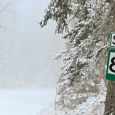
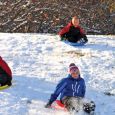
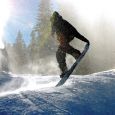
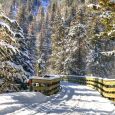

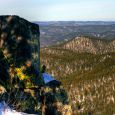


Comments
Sorry I missed you yesterday in Pierre. Saw you in the gallery watching the monkeys in the cage.